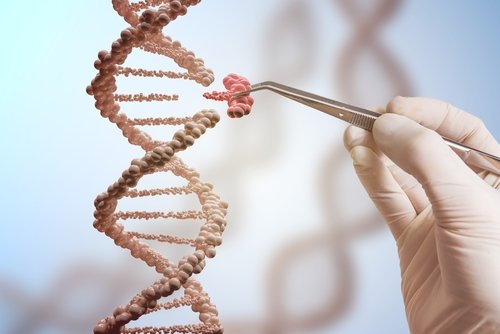New Gene Editing Strategy Leads to Much Longer Protein Production

American researchers have developed a new way of delivering a gene editing therapy that significantly increases the time a repaired gene can generate the protein that’s missing in a disease.
This means that a gene therapy does not have to be repeated as much to help a person counteract an inherited disorder.
The gene therapy delivery technique that the research team at Washington University of St. Louis developed is different from that used to deliver gene therapies for Duchenne muscular dystrophy — a disease where a lot of gene therapy research is occurring.
A rundown on the team’s approach appeared in the journal Gene Therapy. The title is “Targeted in vivo knock-in of human alpha-1-antitrypsin cDNA using adenoviral delivery of CRISPR/Cas9.”
Many diseases stem from mutations in genes’ DNA sequence — a problem that causes the genes to produce less protein than they body needs for key functions. This makes these inherited diseases ideal targets for gene therapy, including gene editing, which involves repairing faulty portions of DNA.
One way of delivering a gene therapy is with a harmless virus. The normal copy of the gene that the virus delivers to a random chromosome location generates the protein that the mutated gene can’t. A chromosome contains many genes.
A major limitation of using a virus to deliver a gene therapy is that the normal copy of the gene is lost over time, making the treatment short-lived.
The Washington University researchers believed that delivering a normal gene to a specific chromosome location could lead to the gene being able to generate protein a lot longer. They also believed that delivering a normal gene to a specific location would prevent accidental mutations — and the harmful effects that can go with them.
They decided to see if a specific type of virus — an adenoviral virus — could deliver a normal gene to a specific location, increasing the gene’s production of protein. Their goal was to deliver the alpha-1-antitrypsin gene to what they called the ROSA26 safe harbor in mouse livers.
They used CRISPR/Cas9 gene editing technology to make sure the gene got to where it needed to be.
“We targeted these viruses with CRISPR to a part of the genome [gene landscape] that’s called a safe harbor,” senior author David T. Curiel said in a press release. “These are parts of the DNA sequence that are quiet, removed from more active areas, and where it’s unlikely for this type of editing to do anything harmful.”
The most important finding was that adenoviral delivery led to the alpha-1-antitrypsin gene generating protein for more than 200 days. This was a significant improvement over the four to six weeks of production that other delivery methods led to.
Scientists have done a lot of gene therapy research in Duchenne muscular dystrophy (DMD), with the focus being the replacement of a single gene. Three clinical trials are testing these therapies in DMD.
Research in DMD usually involves delivering a gene therapy with an adeno-associated virus, which in many conditions is less efficient than the adenovirus used in the Washington University study.
An adeno-associated virus works well in DMD, however. That’s because the product of the gene therapy — a muscle protein — stays around and does not get easily degraded.
In the Washington University study, researchers were trying to restore serum proteins, which circulate in the blood. They are constantly being degraded and produced, which means genes need to keep creating them for long periods.
While the Washington University results were promising, the researchers said they worry about the potential side effects of gene therapies.
“These potential immunological [immune system] and genotoxic [DNA-damaging] consequences of gene editing using viral vectors will require exhaustive studies before clinical use should be advanced,” the team wrote.






